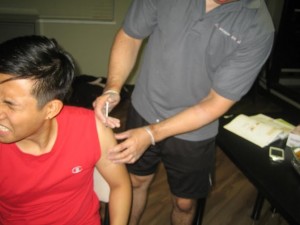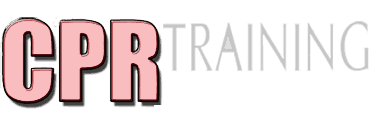Poison pertains to any solid, liquid or gas substance that can result to health impairment, and even death, when introduce into the body or onto the skin surface. There are four ways of introducing the poison into our body: (1) ingestion – by mouth, (2) inhalation – by breathing, (3) absorption – by skin contact, and (4) injection – by animal bites, stings and syringes.
The common causes of poisoning are the occasional accidental poisoning and in attempt of suicide. Common household poisons include: household cleaners (lye and acids), insect and rodent poisons, sleeping pills, pain relievers, denatured alcohol, kerosene, contaminated water and fumes.
Ingested Poison
Ingested poison pertains to poisoning that occurs when the poison enters the body into the digestive tract through the oral cavity. One of the most common types of ingested poison is food poisoning. Food poisoning can be suspected if the casualty ate food that “had a funny taste,” or “didn’t taste right.” These foods could also have been improperly prepared, left at room temperature for a prolonged period of time, be contaminated or processed with too much chemicals.
The following are the signs and symptoms of ingested poison:
- Abdominal pain
- Nausea and vomiting
- Diarrhea
- Burns around the mouth
- Odd-smelling breath
- Altered mental status
- History of ingesting poisons
The following first aid tips are recommended in cases of ingested poison:
- Try to identify the poison. If one is unsure, try to bring a sample of the poison for analysis. If the previous options are not available, save any vomitus of the casualty.
- Assist the casualty to a lying down position. Place the casualty on his or her left side.
- If the victim is unconscious, tilt the head to the left side.
- Check and monitor for circulation, airway and breathing. If necessary, begin chest compressions and CPR.
Inhaled Poison
If poison is inhaled, it means that it enter the body through inhalation into the lungs. This is a relatively common accident in the workplace.
The following are the signs and symptoms of inhaled poison:
- Chest pain
- Breathing difficulty
- Cyanosis of the extremities and mucus membranes
- Cough, hoarseness, burning sensation in the throat
- Headache
- Dizziness
- Seizure
- Responsiveness
- History of inhaling poisons
The following first aid tips are recommended in cases of inhaled poison:
- Remove the casualty from the toxic environment. Immediately move them to an environment with fresh air. Do not enter the toxic environment without a safety mask.
- Check and monitor for circulation, airway and breathing. If necessary, begin chest compressions and CPR.
- Seek medical help immediately.
Absorbed Poison
Absorbed poison pertains to poisoning that enters the body by means of the skin.
The following are the signs and symptoms of absorbed poison:
- Powder or liquid on the skin
- Redness of the skin
- Rashes
- Blister
- Burns on the skin
- Itching or irritation
- History of exposure to poison
The following first aid tips are recommended in cases of inhaled poison:
- Remove the clothing as it may still contain traces of the poison
- Using a dry cloth, blot the poison from the skin. If the poison is a dry powder, use a brush to remove it.
- Wash the area with abundant amount of water
- Check and monitor for circulation, airway and breathing. If necessary, begin chest compressions and CPR.
Injected Poison
Injected poison may come in the form of an animal bite, insect sting or syringe. Signs and symptoms and first aid measures will slightly vary.

The following are the signs and symptoms of injected poison:
- Pain and swelling
- If insect, stinger may still be present
- Bite mark
- Nausea and vomiting
- Difficulty breathing or swallowing
- Allergic reaction
The following first aid tips are recommended in cases of injected poison:
- Remove the casualty to a safer area.
- If there is heavy bleeding, control the bleeding by applying direct pressure on the wound.
- If the stinger is still present, remove it using the fingernails. Do not use tweezers to avoid releasing more venom.
- Clean the affected area using clean water and soap.
- Apply a cold pack or ice wrapped in cloth to reduce pain and swelling.
- For snake bites, do not raise the bitten area above heart level.
To learn how to properly apply first aid in different cases of poisoning, enroll in First Aid Classes and CPR Courses.
Poison refers to any substances that result to health impairment or death when introduced into the body or onto the skin surface. Ingestion, inhalation, absorption or injection of poison can be life-threatening to a person’s health.
